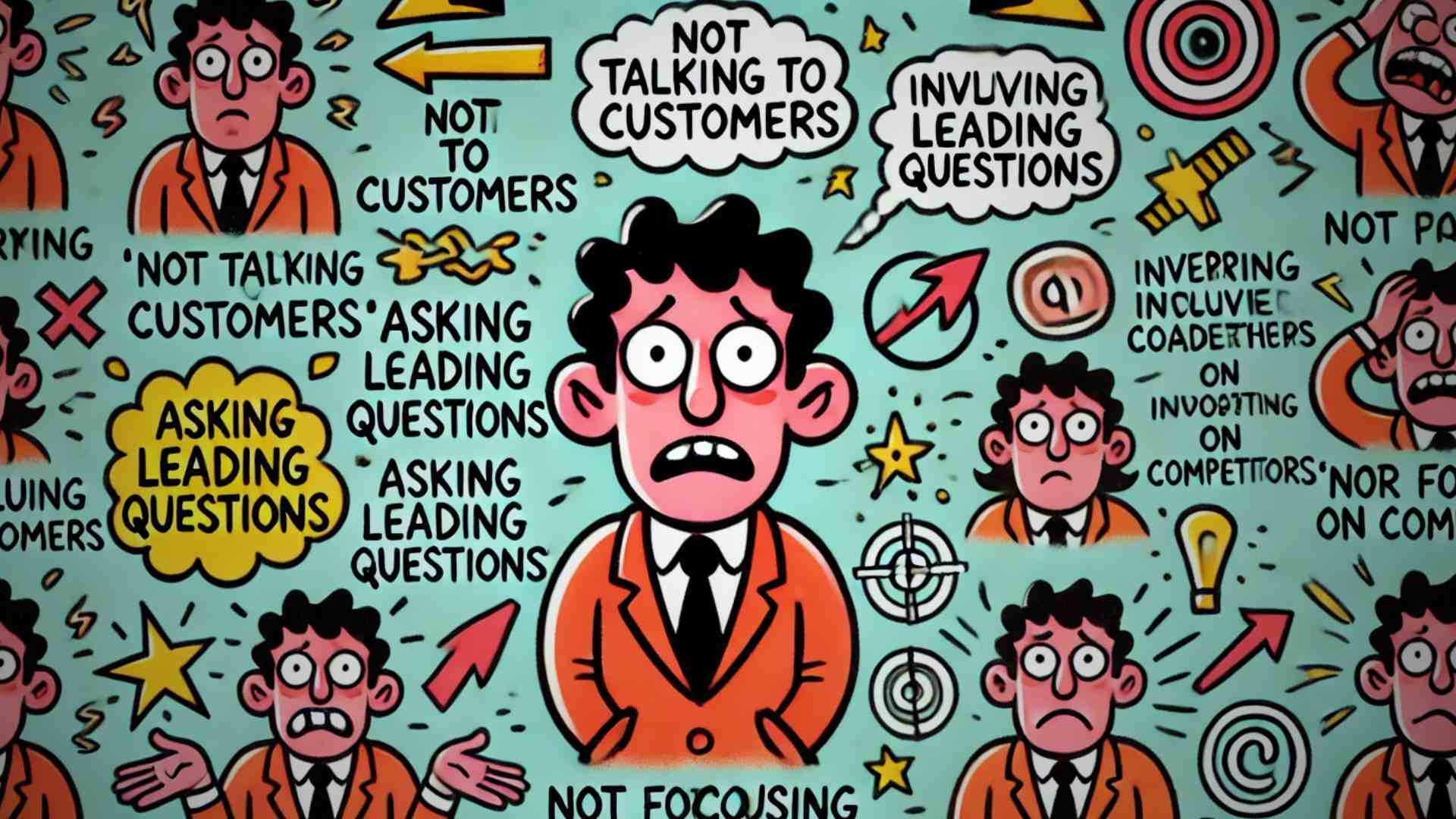
Getting your Startup positioning right can make or break your product. However, even the smartest founders often stumble over the basics.
Below are nine common positioning mistakes and how to steer clear of them.
1. Not Talking to Customers
The Mistake: Relying solely on internal teams like sales and customer success for insights.
- The Fix: While your team knows a lot, nothing beats direct conversations with customers. Set aside time for dedicated discussions focused solely on positioning. You'll uncover insights and inspiration that you can’t get secondhand.
- Example: If you’re developing a SaaS tool, talk directly to the users—those on the frontlines using your product every day. They’ll tell you the real value it provides, which might be different from what you thought.
2. Asking Leading Questions
The Mistake: Framing your questions to confirm what you already believe.
- The Fix: Avoid questions that lead to biased answers, like “How have we improved your workflow?” Instead, ask open-ended questions that allow customers to speak freely about their experiences.
- Example: When testing new features, ask, “What do you find most challenging when using our product?” This lets users highlight their pain points without your influence.
3. Not Involving Leadership
The Mistake: Conducting positioning work in a silo, away from other leaders.
- The Fix: Positioning isn’t just a marketing task—it’s a company-wide responsibility. Leadership needs to be involved from the start, making big decisions and championing the work when it’s done.
- Example: If you’re pivoting your product, ensure that your CEO and key executives are part of the positioning discussions. Their buy-in will be crucial when rolling out new messaging.
4. No Connection to Corporate Strategy
The Mistake: Treating positioning as a separate task from the broader business strategy.
- The Fix: Your positioning should be directly linked to your company’s long-term goals. Start by aligning on where the company is headed and ensure that your positioning supports that direction.
- Example: If your startup aims to dominate a niche market, your positioning should reflect that focus rather than casting a wide net. This clarity will guide your marketing efforts and resonate with your target audience.
5. No Market-Facing Outputs
The Mistake: Treating positioning as an internal exercise with no immediate external application.
- The Fix: Positioning isn’t just for internal alignment—it needs to translate into market-facing outputs like updated GTM messaging. Don’t let it gather dust in a Drive folder; make it actionable.
- Example: After refining your positioning, update your website, sales pitches, and marketing materials to reflect the new message. This consistency helps solidify your brand in the minds of customers.
6. Overfocus on Direct Competitors
The Mistake: Assuming your main competitors are those that look like you.
- The Fix: Broaden your view. Sometimes your biggest competition isn’t a similar product, but an entirely different approach or technology. Let your customers guide you in identifying true alternatives.
- Example: If you’re offering a project management tool, your competition might not just be other software—it could be spreadsheets or even manual processes. Position your product as a clear improvement over these alternatives.
7. Not Being Honest About Why You Win and Lose
The Mistake: Allowing biases to cloud your understanding of what drives success or failure.
- The Fix: Seek the truth, even if it’s uncomfortable. Understand the real reasons behind your wins and losses. This insight is critical for refining your positioning and making it resonate with your audience.
- Example: If you lose deals because of a specific feature that competitors have, acknowledge it. Use this knowledge to either improve your product or adjust your messaging to emphasize your strengths.
8. Pre-Ordaining a Category Strategy
The Mistake: Deciding on a category strategy before fully understanding the market.
- The Fix: Avoid getting fixated on creating a new category unless it truly benefits your positioning. It’s better to synthesize facts, explore different options, and make a well-informed decision.
- Example: If you’re developing a new type of AI tool, don’t rush to label it under a new category unless you’re sure it’s the best move. Sometimes fitting into an existing category with a unique spin is more effective.
9. Not Having a Plan to Socialize Positioning
The Mistake: Failing to rally the entire company around the new positioning.
- The Fix: Changing how the market views your product is a whole-company effort. Make sure everyone knows what’s happening, why it’s important, and how they can contribute.
- Example: After finalizing your new positioning, hold an all-hands meeting to explain the changes. Provide clear talking points so that everyone—from developers to sales—can communicate the new message consistently.
Conclusion
Getting your positioning right is crucial for any startup aiming for success. By avoiding these common mistakes, you can develop a positioning strategy that resonates with your market, aligns with your company’s goals, and drives growth.
Remember, positioning is an ongoing process that requires input from across the organization and a commitment to staying connected with your customers.